INDIAN ARMED FORCES CHIEFS ON
OUR RELENTLESS AND FOCUSED PUBLISHING EFFORTS

SP Guide Publications puts forth a well compiled articulation of issues, pursuits and accomplishments of the Indian Army, over the years

I am confident that SP Guide Publications would continue to inform, inspire and influence.

My compliments to SP Guide Publications for informative and credible reportage on contemporary aerospace issues over the past six decades.
- Prime Minister witnesses 'Bharat Shakti' – a Tri-Services Firing and Manoeuvre Exercise in Pokhran, Rajasthan
- Interim Defence Budget 2024-25 — An Analysis
- Union Defence budget 2024
- Prime Minister Modi Commemorates Indian Navy Day in a Grand Ceremony
- Prime Minister Modi Flies in the LCA Tejas
- New Chapter in India-Italy Defence Ties
- Airpower beyond Boundaries
Army Establishes STEAG
Signals Technology Evaluation and Adaptation Group (STEAG) is mandated to nurture technologies spanning the complete spectrum of wired and wireless systems
 |
The Author is Former Director General of Information Systems and A Special Forces Veteran, Indian Army |
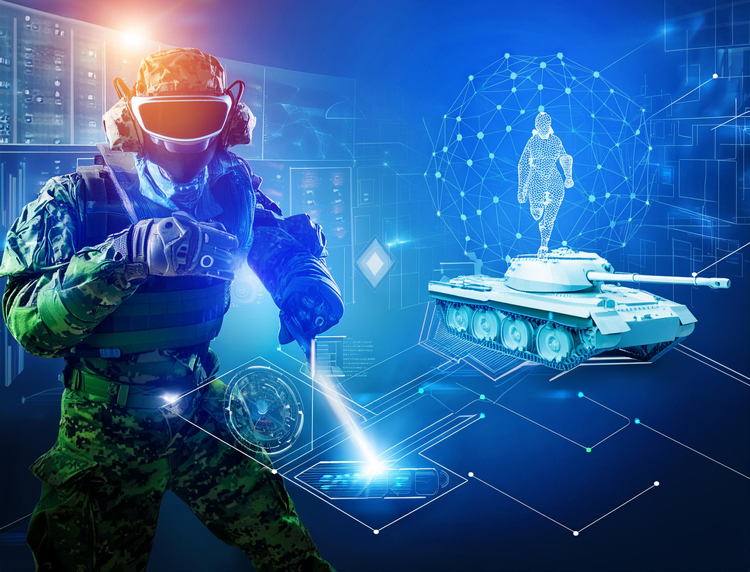
In 2023, a study by the Australian Strategic Policy Institute concluded that of the 44 technologies it considered critical, China leads the world in 37 of them, which included electric batteries and hypersonic missiles. It has become more than certain now that China's Peoples' Liberation Army (PLA) would use artificial intelligence (AI) to help develop plans at the tactical and operational levels of warfare with the aim of cutting through the fog of war and gaining advantage in making decisions. Chinese military experts are terming this as the "Command Brain".
Concurrently, the Chinese military has reportedly developed real-time monitoring and analysis of the electromagnetic spectrum, which grants it unprecedented information perception capabilities; a technology that allows them to swiftly detect and neutralise enemy signals, while ensuring uninterrupted communications for their own forces. Dominance over the electromagnetic spectrum has been part of the US-China tussle especially in the South China Sea (SCS) region. In recent times, there have been instances of mysterious interference with civilian weather radars in the SCS, leading to speculation about covert confrontation between China and the US due to activation of the electronic battlefield. Chinese researchers now claim the enemy will have no place to hide; since the PLA has successfully developed a method for continuous, broad bandwidth; real-time monitoring and analysis of the electromagnetic spectrum, rendering enemy forces completely exposed during any conflict.
China leads the world in 37 of the 44 critical technologies considered by the Australian Strategic Policy Institute
On March 7, 2024, the Indian Union Cabinet, chaired by Prime Minister Narendra Modi, approved the Artificial Intelligence (AI) Mission with an outlay of ₹10,371.92 crore for five years. Under the 'India AI Mission', private companies looking to set up AI computing capacity in the country will be subsidised through a fund. Seed funding will also be provided for AI start-ups. The approved corpus of ₹10,371.92 will be used to create a large computing infrastructure. Briefing reporters after the cabinet meeting, Union Minister Piyush Goyal said supercomputing capacity, comprising over 10,000 GPU, will be made available to various stakeholders for creating an AI ecosystem. Startups, academia, researchers and industry will be given access to the AI supercomputing infrastructure established under the India AI Mission.
Under the AI Mission, the government will focus on four key areas covering AI research, funding start-ups working on designing bespoke chips for AI use cases, offering viability gap funding (VGF) for private companies looking to set up data centres in India for AI use cases, and also creating computing capacity within the government. A National Data Management Officer will be set up under the mission that will coordinate with various government departments and ministries to improve the quality of data and make them available for AI development and deployment.
Chinese military experts are terming AI integration as the 'Command Brain' for tactical and operational decision-making
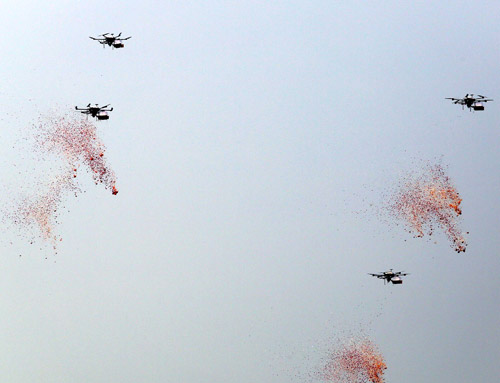
In 2021, the Indian Army had demonstrated an AI-enabled swarm of 75 aerial drones. Also, the Army used AI for intelligence, surveillance and reconnaissance purposes during the 'Dakshin Shakti' military exercise held in the same year. The use of AI in the Indian Army has since become more broad-based. At the inaugural 'AI in Defence' (AIDef) Symposium and Exhibition organised by the Ministry of Defence (MoD) at New Delhi on July 11, 2022, Defence Minister Rajnath Singh unveiled 75 newly created AI technologies. The Indian Military and the defence sector are currently using AI-based technologies for training, surveillance, logistics, cyber-security, UAV, advanced military weaponry like LAWS, autonomous combat vehicles, and robotics.

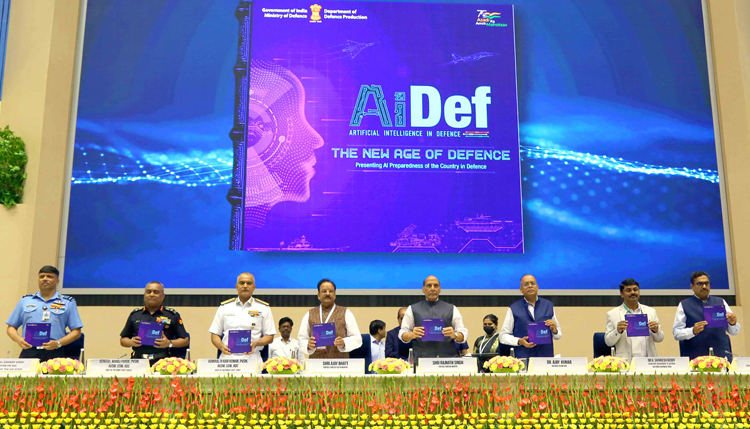
Now news reports of March 18, 2024, have said that the Indian Army has raised an elite unit that will undertake research and evaluation of futuristic communication technologies like 6G, Artificial Intelligence (AI), Machine Learning and Quantum Computing for military use to cope with the changing nature of the battlefield. The unit, called the Signals Technology Evaluation and Adaptation Group (STEAG) is mandated to nurture technologies spanning the complete spectrum of wired and wireless systems. The setting up of STEAG is part of the Indian Army's efforts to develop technologies in the backdrop of requirements of the fast changing futuristic battlefield.
The Indian Union Cabinet approved the Artificial Intelligence (AI) Mission with an outlay of ₹10,371.92 crore for five years, aiming to boost AI infrastructure and startups
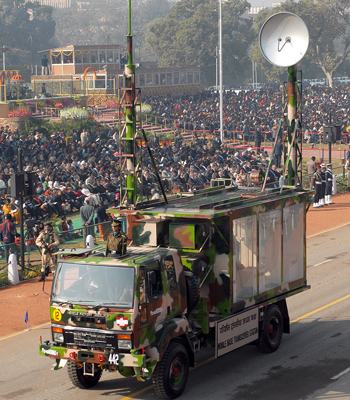
STEAG will focus on all upcoming critical technology domains including electronic exchanges, mobile communications, software-defined radios, electronic warfare systems, 5G and 6G networks, quantum technologies, AI, machine learning and the like; undertaking technical scouting, evaluation, development, management of core ICT solutions, and provide user interface support by maintenance and upgrading of contemporary technologies available in the environment. An official told the media, "It (STEAG) will be a premier organisation, the first of its kind equipped with the capability to harness niche technology, leverage cutting-edge solutions and identify suitable cases for defence applications by fostering collaboration with academia and industry. Aligning itself with the tenets of Atmanirbhar Bharat and Start-Up India, STEAG will help bridge the divide between the Armed Forces on the one hand and industry and academia on the other."
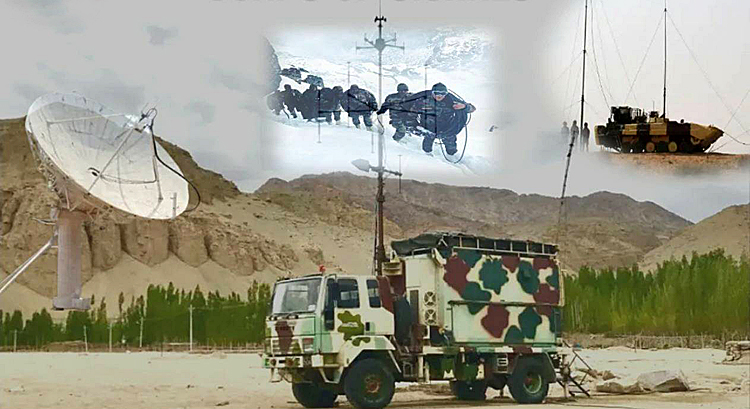
STEAG is expected to be a game changer in fostering self-reliance in high-end communication technologies, which have thus far been a monopoly of select countries with advanced economies and research ecosystems. With communications being a vital component of military operations in the backdrop of fast-evolving technologies for the battlefield, the side with better communication technologies and the ability to connect the various constituents for information sharing will have an edge over its adversary. Modern warfare necessitates the induction of new equipment to provide seamless communication support to units and formations during operations.
The Indian Army has established the Signals Technology Evaluation and Adaptation Group (STEAG) to research and evaluate futuristic communication technologies like 6G, AI, Machine Learning, and Quantum Computing for military use
Finally, STEAG is not a new raising; Army's 21 Signals Group has been reorganised as STEAG to adapt to the emerging technologies in the field of communications, in line with the Army's vision of 'On Path to Transformation' in "adopting niche technologies towards becoming a future ready force. STEAG is a significant step in 2024, which has been declared as 'Year of Tech Absorption'. Headed by a Colonel rank officer of the Army from the Corps of Signals, STEAG will be operational under the Directorate of Signals and based in Delhi. It will research and develop tailored technologies across the spectrum of wired and wireless systems, including electronic exchanges, mobile communications; software defined radios (SDR), electronic warfare (EW) systems, 5G and 6G networks, quantum technologies, artificial intelligence and machine learning.





